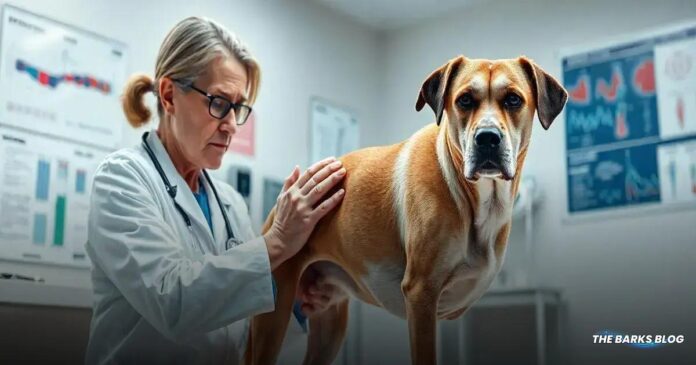Muscle atrophy in dogs is the loss of muscle mass and strength due to inactivity, health issues, or nutritional deficiencies. Early signs include difficulty getting up, decreased jumping ability, and visible muscle loss. Preventive measures involve regular exercise, a balanced diet, and veterinary consultations for personalized treatment and monitoring. Physical therapy can aid in rebuilding muscle strength, helping dogs maintain an active and fulfilling life.
Muscle atrophy in dogs can seem minor, but it’s a bigger problem than you might think. Muscles are crucial for movement and overall health, and losing muscle mass can impact your dog’s quality of life.
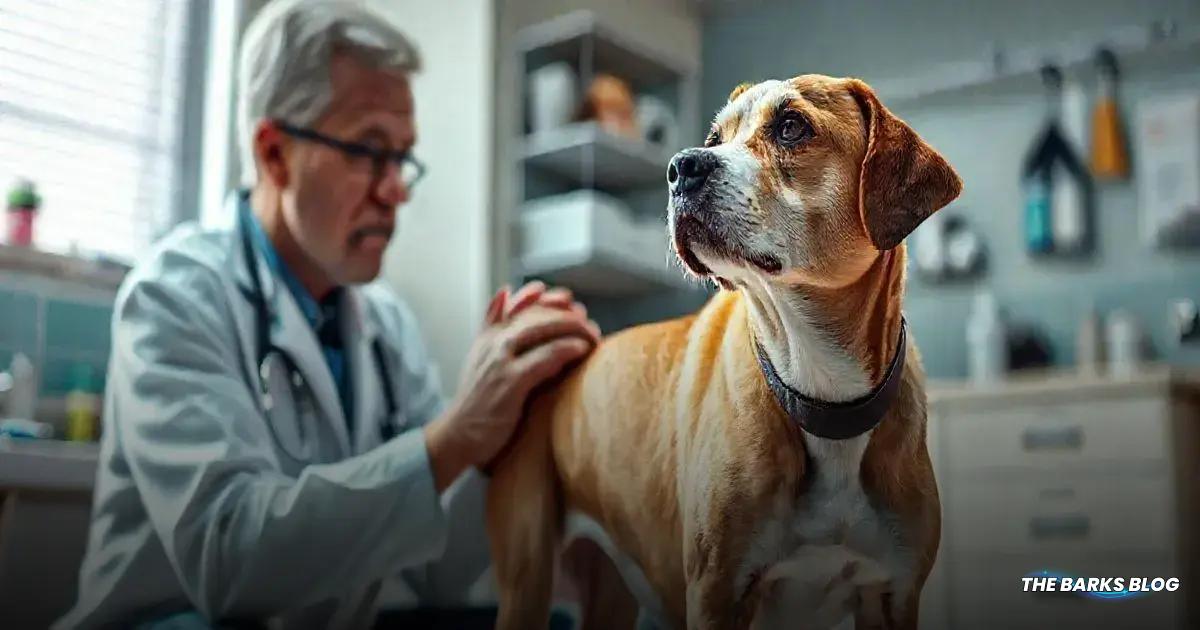
Understanding Muscle Atrophy in Dogs
Understanding muscle atrophy in dogs is crucial for every pet owner. Muscle atrophy, also known as muscle wasting, occurs when muscle fibers shrink and lose mass. This can happen for a variety of reasons, and recognizing the signs early can help in managing the condition effectively.
In dogs, muscle atrophy can be categorized into two main types: disuse atrophy and neurogenic atrophy. Disuse atrophy happens when muscles are not used for extended periods, often due to inactivity from surgery, illness, or arthritis. On the other hand, neurogenic atrophy occurs when there is a breakdown in communication between the muscles and the nervous system, leading to muscle wasting.
Common areas affected by muscle atrophy include the back legs, shoulders, and even the head. You might notice that your dog struggles with activities they once enjoyed, such as jumping or climbing stairs. This can significantly impact their quality of life, making it essential to monitor their physical condition closely.
It’s important to note that muscle atrophy is not always painful. However, the underlying conditions that cause muscle loss, such as arthritis or infections, can lead to discomfort. Therefore, if you suspect your dog is experiencing muscle atrophy, consulting with a veterinarian is vital to determine the best course of action.
By understanding muscle atrophy in dogs, you can take proactive measures to support your furry friend, ensuring they remain healthy and active for years to come.
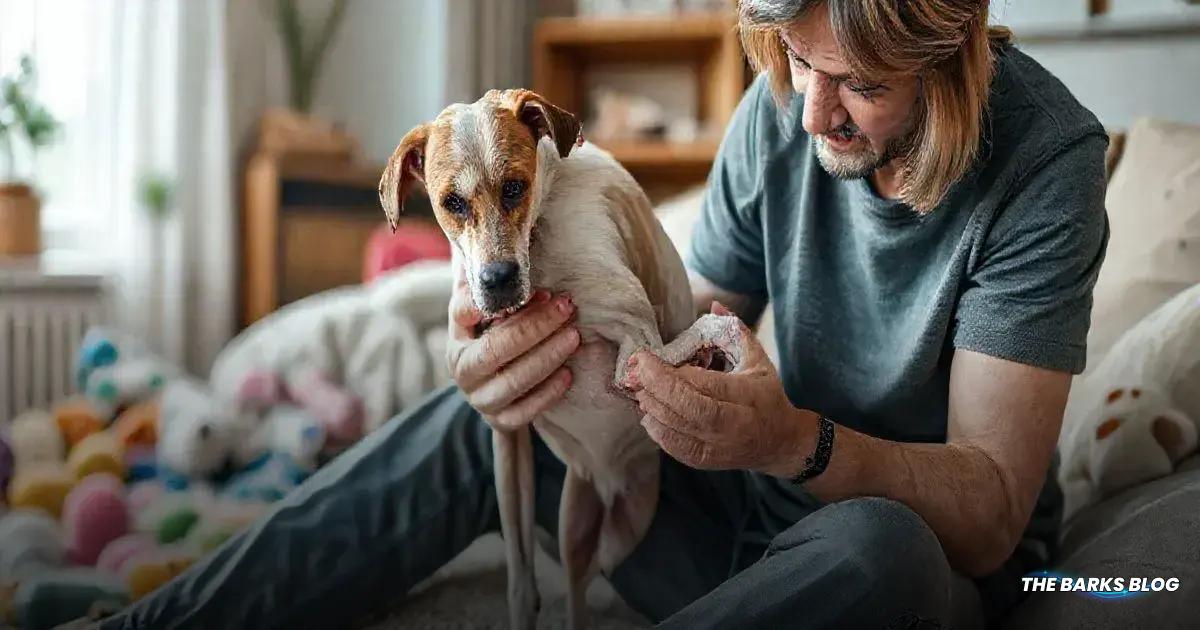
Signs and Symptoms of Muscle Loss
Recognizing the signs and symptoms of muscle loss in dogs is essential for early intervention and treatment. Muscle wasting can manifest in various ways, and some signs may be subtle, while others are more noticeable.
Here are some common signs that may indicate your dog is experiencing muscle loss:
- Avoiding certain types of flooring, such as hardwood or laminate, due to difficulty getting up.
- Visible bones or protrusions on the head, shoulders, back, or hips, indicating loss of muscle mass.
- Decreased ability to jump or climb, which may result in your dog hesitating before attempting these actions.
- Difficulty getting up from a sitting or lying position, which may be accompanied by stiffness or reluctance.
- Dragging toes while walking, which can be a sign of weakness in the hind legs.
- Dropping food while eating, indicating a lack of strength in the jaw muscles.
- Falling with legs splayed out to the sides, rather than keeping them together.
- Having trouble navigating stairs, which may be more pronounced in homes with hard flooring.
- Laying around more than usual, showing decreased interest in play or activities.
- Legs appearing skinny or frail, particularly in the hindquarters.
- Wobbling or swaying while standing still, indicating instability.
- Needing shorter or easier walks, as fatigue sets in more quickly.
- Refusing to chew on toys, bones, or treats, which can signal weakness in the jaw muscles.
- Not wanting to go for walks or participate in activities they once enjoyed.
- Shaking legs when getting up or after exercise, which may indicate muscle fatigue.
- Slipping or falling on slick surfaces, highlighting a lack of balance and strength.
- Weight loss, particularly noticeable in the back end, which can be alarming for pet owners.
- Wounds or sores on elbows, wrists, hips, and ankles due to decreased muscle support.
If you notice any of these signs in your dog, it’s crucial to consult with your veterinarian. Early detection and intervention can significantly improve your dog’s quality of life and help address the underlying causes of muscle loss.
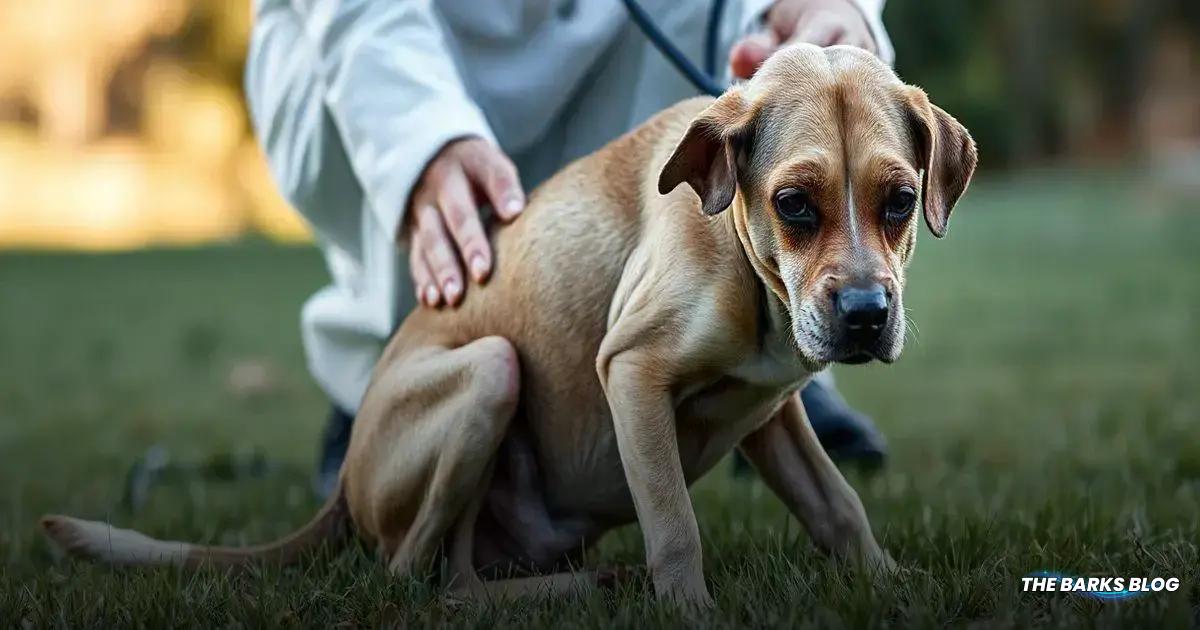
Common Causes of Muscle Atrophy
Muscle atrophy in dogs can arise from various underlying causes, and understanding these can help pet owners take proactive measures to prevent or manage the condition. Here are some common causes of muscle atrophy:
1. Arthritis and Joint Disease
Arthritis is one of the most prevalent causes of muscle atrophy in dogs, especially in older pets. Joint pain can make it difficult for dogs to move comfortably, leading to decreased activity levels. As dogs become less active, their muscles begin to waste away from lack of use, creating a cycle of pain and inactivity.
2. Improper Exercise (Too Much or Too Little)
Both insufficient and excessive exercise can contribute to muscle atrophy. Lack of exercise prevents muscles from being used, while overexertion without adequate rest can lead to muscle breakdown due to increased stress hormones like cortisol.
3. Hormonal Imbalances
Hormonal issues, such as hyperthyroidism or hypothyroidism, can lead to muscle wasting. An overactive thyroid can increase metabolism, causing the body to break down muscle for energy. Conversely, an underactive thyroid slows metabolism, leading to muscle deterioration over time.
4. Overuse of Corticosteroids
Corticosteroids, often prescribed for various conditions, can have side effects, including muscle wasting. These medications mimic cortisol in the body, leading to similar muscle breakdown effects if used long-term.
5. Chronic Stress and Anxiety
Long-term stress and anxiety can elevate cortisol levels in dogs, which may contribute to muscle loss. Managing stress through behavioral interventions or medication can help mitigate this issue.
6. Hidden Infections
Infections caused by bacteria, viruses, or fungi can lead to muscle atrophy. Even infections that are not directly linked to the muscles can cause muscle loss as the body expends energy to fight off the infection.
7. Other Diseases
Several diseases, including heart disease, diabetes, cancer, and neurological disorders, can result in muscle atrophy as a symptom. These conditions often increase the body’s nutritional needs, leading to muscle breakdown when those needs aren’t met.
8. Inadequate Nutrition
A diet low in protein or essential nutrients can lead to muscle wasting. Dogs fed vegetarian or poorly formulated diets may not receive the necessary protein to maintain muscle mass.
9. Genetic Disorders
Some dogs may be genetically predisposed to muscle atrophy due to inherited conditions like muscular dystrophy or myasthenia gravis. These disorders can affect muscle function and health.
10. Environmental Toxins
Exposure to certain environmental toxins, such as those from bacteria like Clostridium, can lead to muscle atrophy. Toxins can cause muscle paralysis or damage, resulting in muscle loss if not treated promptly.
Understanding these common causes of muscle atrophy can help you identify potential risks for your dog and take appropriate action. If you suspect your dog is experiencing muscle atrophy, consult your veterinarian for a thorough evaluation and tailored recommendations.

The Role of Nutrition in Muscle Health
Nutrition plays a vital role in maintaining muscle health in dogs, and an appropriate diet can significantly impact their overall well-being.
Proper nutrition helps to prevent muscle atrophy and supports muscle repair and growth. Here are key aspects of how nutrition affects muscle health:
1. Importance of Protein
Protein is essential for building and repairing muscle tissue. Dogs require a diet that contains adequate protein to maintain muscle mass and support recovery from exercise or injury. Generally, a dog’s diet should contain at least 18% protein, but active or working dogs may need closer to 30% to meet their energy and repair needs.
2. Essential Fatty Acids
In addition to protein, essential fatty acids are crucial for muscle health. Omega-3 and omega-6 fatty acids play a role in reducing inflammation and promoting overall muscle function. Including sources of these fatty acids, such as fish oil or flaxseed oil, can help support your dog’s muscle integrity.
3. Balanced Diet
A well-balanced diet that includes carbohydrates, vitamins, and minerals is necessary for optimal muscle health. Carbohydrates provide energy for physical activities, while vitamins and minerals support various bodily functions, including muscle contraction and recovery.
4. Avoiding Low-Protein Diets
Feeding a low-protein diet can lead to muscle loss, especially in dogs that are not getting enough protein to repair and maintain their muscle tissue. This is particularly concerning for dogs on vegetarian diets or poorly formulated home-cooked meals. Always consult with your veterinarian to ensure your dog’s diet meets their protein needs.
5. Monitoring Weight
Maintaining a healthy weight is crucial for muscle health. Overweight dogs may struggle with mobility issues, leading to decreased activity and potential muscle atrophy. Conversely, underweight dogs may not have enough muscle mass to support their daily activities. Regularly monitoring your dog’s weight and adjusting their diet as needed is essential.
6. Nutritional Supplements
In some cases, veterinarians may recommend nutritional supplements to support muscle health, especially for dogs recovering from surgery or injury. Supplements containing amino acids, creatine, or specific vitamins can aid in muscle repair and growth.
By ensuring your dog receives a balanced diet with adequate protein and essential nutrients, you can help maintain their muscle health and prevent atrophy. Always consult with your veterinarian before making significant changes to your dog’s diet, as they can provide tailored recommendations based on your dog’s specific needs.
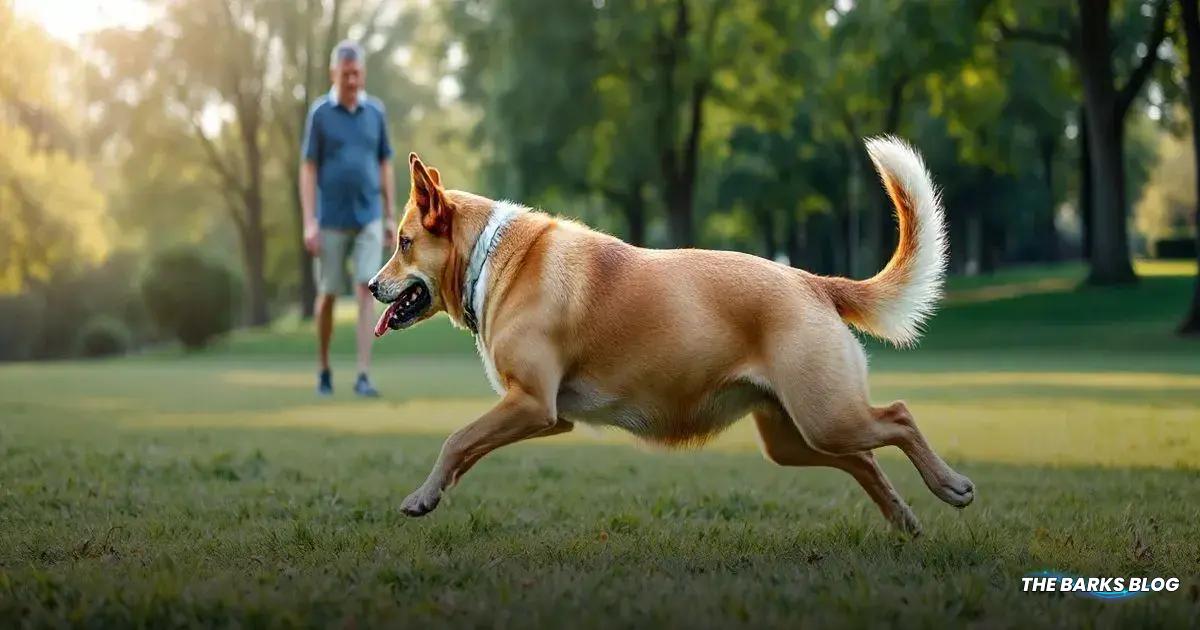
Exercise and Its Impact on Muscle Atrophy
Exercise is a crucial factor in maintaining muscle health and preventing muscle atrophy in dogs. Regular physical activity helps to keep muscles strong, supports joint health, and enhances overall well-being. Here’s how exercise impacts muscle atrophy:
1. Importance of Regular Exercise
Engaging in regular exercise is essential for dogs to maintain muscle mass. Activities like walking, running, playing fetch, and agility training help stimulate muscle use, preventing disuse atrophy. Dogs that are consistently active are less likely to experience muscle wasting compared to those with sedentary lifestyles.
2. Balancing Exercise Levels
While regular exercise is vital, it’s important to find the right balance. Too little exercise can lead to muscle atrophy due to inactivity, while excessive exercise without adequate rest can cause muscle breakdown. Finding a suitable exercise routine tailored to your dog’s age, breed, and fitness level is key to preventing muscle loss.
3. Tailored Exercise Plans
For dogs recovering from injury or surgery, a customized exercise plan is essential. Consulting with a veterinary physical therapist can help create a safe and effective regimen that gradually increases in intensity. This approach ensures that your dog rebuilds muscle strength without risking further injury.
4. Types of Exercise
Different types of exercise can benefit muscle health in various ways:
- Strength Training: Activities that involve resistance, such as climbing stairs or using weighted vests, can help build muscle strength.
- Cardiovascular Exercise: Walking, running, and swimming improve overall fitness and endurance, which are crucial for maintaining muscle mass.
- Flexibility and Balance Exercises: Incorporating stretching and balance activities can enhance muscle function and prevent injuries.
5. Monitoring for Signs of Fatigue
While exercise is beneficial, it’s important to monitor your dog for signs of fatigue or discomfort. If your dog shows reluctance to engage in activities they once enjoyed, it may indicate muscle weakness or pain. In such cases, it’s essential to consult your veterinarian for guidance.
6. Gradual Increase in Activity
If your dog has been inactive for a while, it’s crucial to gradually increase their activity levels. Sudden bursts of intense exercise can lead to injuries and exacerbate muscle atrophy. Start with short, gentle walks and slowly build up to more vigorous activities.
In summary, regular and balanced exercise is vital for preventing muscle atrophy in dogs. By keeping your dog active and engaged, you can help maintain their muscle health and overall quality of life. Always consult your veterinarian before starting a new exercise program, especially if your dog has existing health concerns.
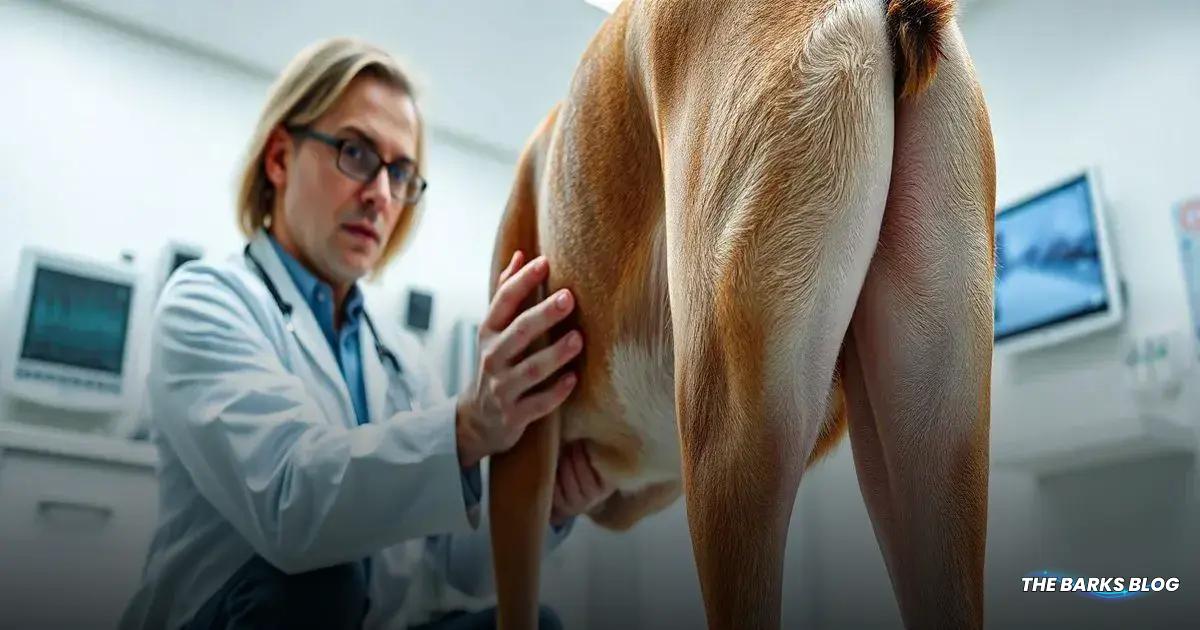
Diagnosing Muscle Atrophy in Dogs
Diagnosing muscle atrophy in dogs involves a comprehensive evaluation by a veterinarian to determine the underlying causes and extent of muscle loss. Here’s an overview of the diagnostic process:
1. Physical Examination
The first step in diagnosing muscle atrophy is a thorough physical examination. Your veterinarian will assess your dog’s overall health, focusing on muscle mass and tone. They will palpate (feel) the muscles, particularly in the legs and spine, to identify any signs of muscle wasting.
2. Observing Signs and Symptoms
During the examination, the veterinarian will also look for common signs of muscle atrophy, such as difficulty getting up, changes in activity levels, or visible protrusions of bones. Noting these symptoms can help the veterinarian understand the severity and possible causes of the muscle loss.
3. Joint Assessment
Joint health is closely related to muscle function. Your veterinarian will likely examine the major joints, including hips, knees, and elbows, for signs of arthritis or injury, which can contribute to muscle atrophy. X-rays may be recommended to assess joint structure and any potential issues.
4. Diagnostic Testing
If the muscle atrophy is suspected to be related to a specific underlying condition, additional diagnostic tests may be necessary. These tests can include:
- Blood Tests: Blood work can help identify hormonal imbalances, infections, or other systemic issues that may be causing muscle loss.
- Muscle Biopsies: In some cases, a muscle biopsy may be performed to examine muscle tissue for signs of disease or degeneration.
- Neurological Exams: If neurogenic atrophy is suspected, a neurological examination may be conducted to assess nerve function and communication with the muscles.
5. Specialized Testing
Depending on the findings from the initial examination and tests, your veterinarian may recommend specialized testing. This could involve sending blood samples to specialized laboratories for more in-depth analysis or conducting imaging studies to evaluate the nervous system.
6. Tailored Diagnosis
Ultimately, the diagnosis of muscle atrophy will depend on a combination of physical examination findings, diagnostic test results, and your dog’s medical history. Each case is unique, and your veterinarian will tailor their approach based on your dog’s specific needs and circumstances.
In summary, diagnosing muscle atrophy in dogs requires a comprehensive evaluation by a veterinarian. Early detection and intervention can significantly improve outcomes, so if you suspect your dog is experiencing muscle loss, it’s essential to seek veterinary care promptly.
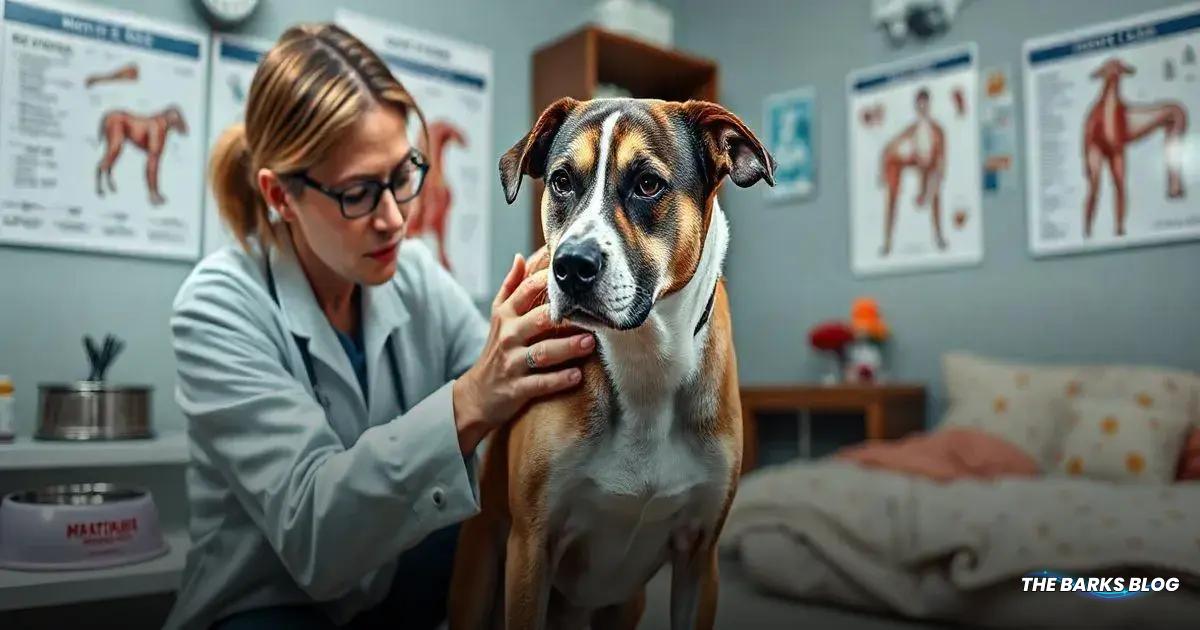
Management Strategies for Muscle Atrophy
Managing muscle atrophy in dogs involves a multifaceted approach that addresses the underlying causes while promoting muscle health and strength. Here are effective management strategies to help your dog regain muscle mass and improve their quality of life:
1. Veterinary Guidance
Always consult your veterinarian before implementing any management strategies. They can provide a tailored plan based on your dog’s specific condition, needs, and health status. Regular check-ups will help monitor your dog’s progress and make necessary adjustments to the management plan.
2. Nutritional Support
Ensuring that your dog receives a balanced diet rich in protein and essential nutrients is crucial for muscle recovery. Consider feeding high-quality dog food that meets their protein requirements, which should generally be at least 18% for most dogs and up to 30% for active or working dogs. Discuss dietary changes with your veterinarian to ensure they are appropriate for your dog’s health.
3. Tailored Exercise Program
Developing a customized exercise regimen is vital for rebuilding muscle strength. Work with a veterinary physical therapist to create a safe and effective exercise plan that gradually increases in intensity. This may include low-impact activities such as walking, swimming, or gentle play to avoid overexertion while still promoting muscle use.
4. Physical Therapy
Physical therapy can be highly beneficial for dogs with muscle atrophy. A certified veterinary physical therapist can provide targeted exercises, massage therapy, and other modalities to help improve muscle function and mobility. These therapies can also alleviate discomfort and promote overall well-being.
5. Environmental Modifications
Make adjustments in your home to accommodate your dog’s needs and prevent injuries. Use non-slip mats or rugs on slippery surfaces to help your dog maintain stability. Providing ramps or stairs can assist them in accessing furniture or navigating stairs safely. Baby gates can help prevent falls in areas where your dog may struggle.
6. Managing Pain and Discomfort
If your dog is experiencing pain due to underlying conditions like arthritis, managing that pain is crucial for their ability to engage in physical activity. Your veterinarian may prescribe pain relief medications or anti-inflammatory drugs to help alleviate discomfort and encourage movement.
7. Monitoring Progress
Regularly monitor your dog’s progress as they engage in management strategies. Keep track of their weight, muscle tone, and overall activity levels. If you notice any changes or if your dog seems to be struggling, consult your veterinarian for further evaluation.
8. Consistency is Key
Consistency in implementing these management strategies is essential for success. Regular exercise, proper nutrition, and veterinary check-ups will help ensure that your dog is on the right track to regaining muscle strength and improving their quality of life.
In summary, managing muscle atrophy in dogs requires a comprehensive approach that includes veterinary guidance, nutritional support, tailored exercise, and environmental modifications. By taking proactive steps, you can help your furry friend regain strength and enjoy a happier, healthier life.
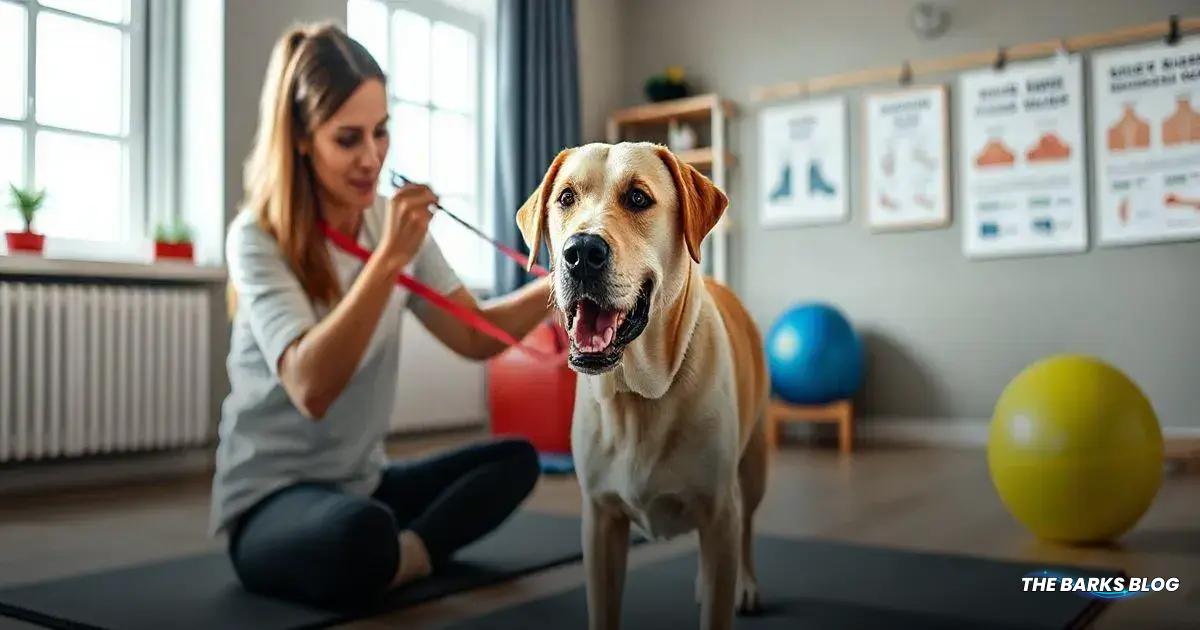
How to Help Dogs Rebuild Muscle
Helping dogs rebuild muscle after experiencing atrophy is a gradual process that requires patience, commitment, and the right strategies. Here are effective methods to support your dog in regaining muscle strength:
1. Focus on Nutrition
Nutrition is a critical component in muscle rebuilding. Ensure your dog receives a diet rich in high-quality protein to support muscle repair and growth. Aim for a protein content of at least 18% in their food, or up to 30% for active dogs. Consult your veterinarian to determine the best dietary plan for your dog’s specific needs.
2. Gradual Exercise Increase
Start with low-impact exercises and gradually increase the intensity and duration as your dog becomes stronger. Activities like short walks, gentle play, and swimming are excellent ways to encourage muscle use without overexertion. Monitor your dog’s response to exercise and adjust accordingly to avoid fatigue or injury.
3. Structured Physical Therapy
Consider enrolling your dog in a physical therapy program tailored to their needs. A veterinary physical therapist can provide specialized exercises and techniques to help rebuild muscle strength safely. Therapies may include stretching, strength training, and balance exercises designed specifically for your dog’s condition.
4. Strength Training
Incorporate strength training exercises into your dog’s routine to promote muscle growth. This can include activities like walking on an incline, using resistance bands designed for dogs, or performing controlled movements that engage specific muscle groups. Always ensure that strength training is appropriate for your dog’s fitness level.
5. Monitor Weight and Body Condition
Keeping your dog at a healthy weight is essential for muscle rebuilding. Excess weight can hinder mobility and increase the risk of injury. Regularly assess your dog’s body condition and weight, and make dietary adjustments as necessary to support their muscle-building efforts.
6. Provide a Safe Environment
Ensure your home is safe and accommodating for your dog as they work on rebuilding muscle. Use non-slip mats on slippery surfaces, provide ramps or steps for accessing furniture, and create a comfortable space for them to rest and recover after exercise.
7. Consistency and Patience
Rebuilding muscle takes time, so be patient and consistent with your efforts. Regularly engage your dog in exercise, maintain a nutritious diet, and follow through with any physical therapy recommendations. Celebrate small milestones and progress along the way to keep your dog motivated.
8. Regular Veterinary Check-Ups
Schedule regular check-ups with your veterinarian to monitor your dog’s progress. They can provide valuable insights, adjust exercise plans, and ensure that your dog is on track for recovery. If you notice any setbacks or concerns, consult your veterinarian promptly.
In summary, helping dogs rebuild muscle after atrophy involves a combination of proper nutrition, gradual exercise, physical therapy, and consistent monitoring. With dedication and the right approach, you can support your dog in regaining strength and enhancing their overall quality of life.
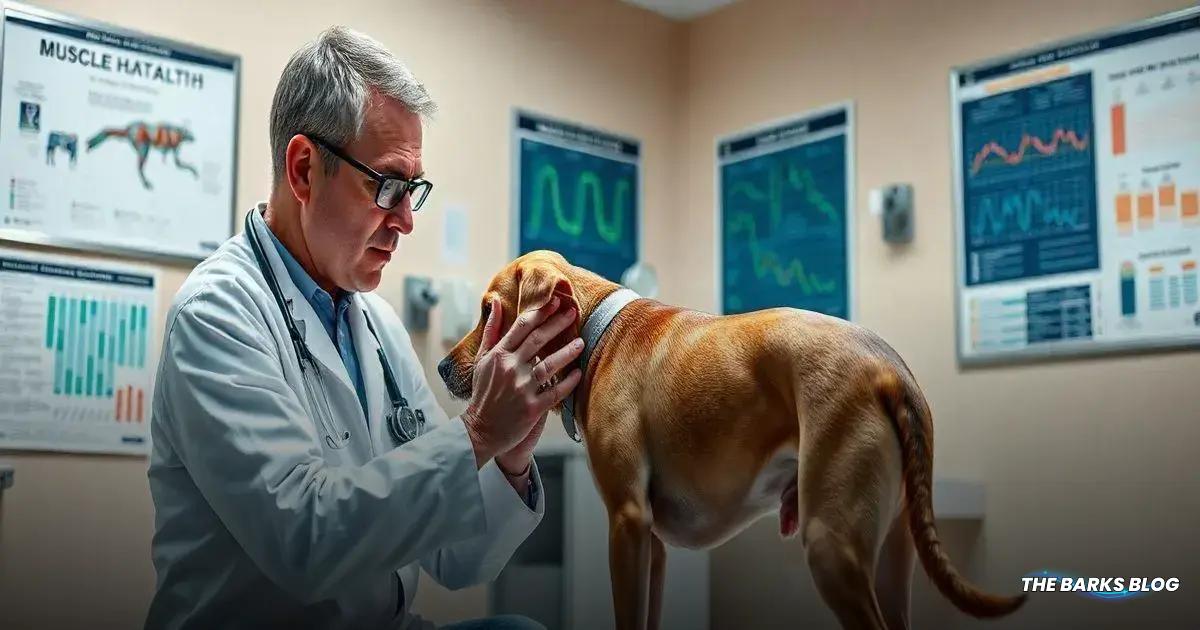
Preventing Muscle Atrophy in Dogs
Preventing muscle atrophy in dogs is essential for maintaining their overall health and quality of life. By taking proactive measures, you can help ensure your furry friend remains strong and active throughout their life. Here are effective strategies for preventing muscle atrophy:
1. Regular Exercise
Engaging your dog in regular physical activity is one of the most effective ways to prevent muscle atrophy. Aim for daily walks, playtime, and interactive activities that stimulate both their body and mind. Tailor the exercise routine to your dog’s age, breed, and fitness level to ensure they remain active without overexertion.
2. Balanced Nutrition
Providing a well-balanced diet rich in high-quality protein and essential nutrients is crucial for muscle health. Ensure your dog’s food contains adequate protein to support muscle maintenance and repair. Consult with your veterinarian to determine the best dietary plan for your dog’s specific needs.
3. Weight Management
Maintaining a healthy weight is vital for preventing muscle atrophy. Overweight dogs face increased risks of joint issues and decreased mobility, which can lead to muscle loss. Regularly monitor your dog’s weight and body condition, making dietary adjustments as necessary to keep them at a healthy weight.
4. Early Intervention
Watch for early signs of muscle loss or changes in activity levels. If you notice your dog becoming less active or struggling with movements they once enjoyed, consult your veterinarian promptly. Early intervention can help address underlying issues before they lead to significant muscle atrophy.
5. Tailored Exercise Programs
If your dog has specific health concerns or is recovering from an injury, work with a veterinarian or a certified canine rehabilitation specialist to develop a tailored exercise program. This will ensure that your dog engages in safe and effective activities that promote muscle health.
6. Environmental Modifications
Make adjustments in your home to create a safe and supportive environment for your dog. Use non-slip mats on slippery surfaces, provide ramps for easier access to furniture, and ensure they have a comfortable space to rest and recover after exercise.
7. Regular Veterinary Check-Ups
Schedule routine check-ups with your veterinarian to monitor your dog’s health and address any potential issues early. Regular examinations can help identify problems that may contribute to muscle atrophy, allowing for timely intervention.
8. Mental Stimulation
Incorporate mental stimulation into your dog’s daily routine through training, puzzle toys, and interactive games. Keeping their mind engaged can encourage physical activity and prevent boredom, which can lead to inactivity.
In summary, preventing muscle atrophy in dogs requires a combination of regular exercise, balanced nutrition, weight management, and early intervention. By taking proactive steps, you can help your furry friend maintain their strength and vitality, ensuring a happy and active life.
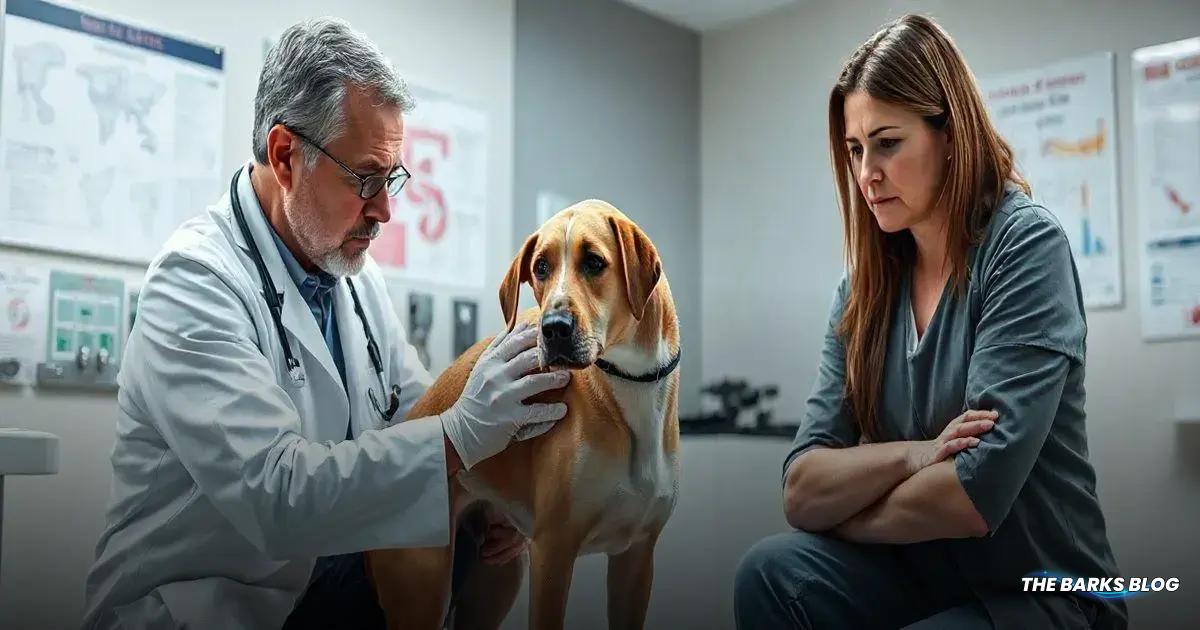
Consulting with Your Veterinarian
Consulting with your veterinarian is a crucial step in managing and preventing muscle atrophy in dogs. Your veterinarian can provide expert guidance tailored to your dog’s specific needs and health status. Here’s why regular veterinary consultations are essential:
1. Professional Assessment
Veterinarians are trained to assess your dog’s overall health, including muscle condition, weight, and mobility. They can identify early signs of muscle atrophy and determine if any underlying health issues contribute to the problem.
2. Personalized Treatment Plans
Based on their assessment, your veterinarian can develop a personalized treatment plan that addresses your dog’s unique situation. This may include recommendations for dietary changes, exercise regimens, and other management strategies tailored to your dog’s age, breed, and health conditions.
3. Nutritional Guidance
Your veterinarian can provide valuable insights into your dog’s nutritional needs. They can recommend specific diets or supplements to support muscle health and overall well-being, ensuring that your dog receives the right balance of nutrients.
4. Monitoring Progress
Regular check-ups allow your veterinarian to monitor your dog’s progress over time. They can evaluate the effectiveness of any treatment plans and make necessary adjustments based on your dog’s response to therapy, diet, and exercise.
5. Addressing Underlying Conditions
Muscle atrophy may be a symptom of underlying health issues, such as arthritis, hormonal imbalances, or neurological disorders. Your veterinarian can diagnose these conditions and provide appropriate treatments, helping to prevent further muscle loss.
6. Recommendations for Physical Therapy
If your dog requires rehabilitation, your veterinarian can refer you to a certified canine rehabilitation specialist or physical therapist. These professionals can create tailored exercise programs and provide therapies to help rebuild muscle strength safely.
7. Education and Support
Consulting with your veterinarian also provides an opportunity to educate yourself about muscle health and atrophy in dogs. They can answer your questions, address your concerns, and offer ongoing support as you work to maintain your dog’s well-being.
8. Early Intervention
Early intervention is key to preventing significant muscle loss. Regular veterinary visits can help catch potential issues before they develop into more serious problems, allowing for timely treatment and better outcomes.
In summary, consulting with your veterinarian is essential in managing and preventing muscle atrophy in dogs. Their expertise and guidance can help ensure your furry friend receives the best possible care, leading to a healthier, more active life.
Conclusion
Muscle atrophy in dogs is a serious condition that can significantly impact their quality of life, making it essential for pet owners to be proactive in prevention and management.
By understanding the causes, recognizing the signs, and implementing effective strategies, you can help your dog maintain muscle health and strength.
Regular exercise, balanced nutrition, and routine veterinary check-ups are key components in preventing muscle loss. Additionally, early intervention and personalized treatment plans can make a significant difference in your dog’s recovery and overall well-being.
Ultimately, your commitment to your dog’s health through education, support, and consistent care will ensure they remain active, happy, and healthy for years to come. If you notice any signs of muscle atrophy or have concerns about your dog’s muscle health, don’t hesitate to consult your veterinarian for guidance and assistance.
FAQ – Frequently Asked Questions about Muscle Atrophy in Dogs
What is muscle atrophy in dogs?
Muscle atrophy in dogs refers to the loss of muscle mass and strength, which can occur due to various factors such as inactivity, underlying health conditions, or nutritional deficiencies.
What are the common signs of muscle atrophy in dogs?
Common signs include difficulty getting up, decreased ability to jump or climb, visible bones or protrusions on the body, dragging toes, and reluctance to engage in physical activities.
How can I prevent muscle atrophy in my dog?
Prevent muscle atrophy by ensuring regular exercise, providing a balanced diet rich in protein, maintaining a healthy weight, and monitoring for early signs of muscle loss.
What role does nutrition play in muscle health?
Nutrition is crucial for muscle health; a diet high in quality protein and essential nutrients supports muscle maintenance and repair, helping to prevent muscle loss.
When should I consult my veterinarian about muscle atrophy?
Consult your veterinarian if you notice signs of muscle atrophy, changes in your dog’s activity levels, or if you have concerns about their overall health and well-being.
Can physical therapy help dogs with muscle atrophy?
Yes, physical therapy can be beneficial for dogs with muscle atrophy. A certified veterinary physical therapist can provide tailored exercises and therapies to help rebuild muscle strength safely.


